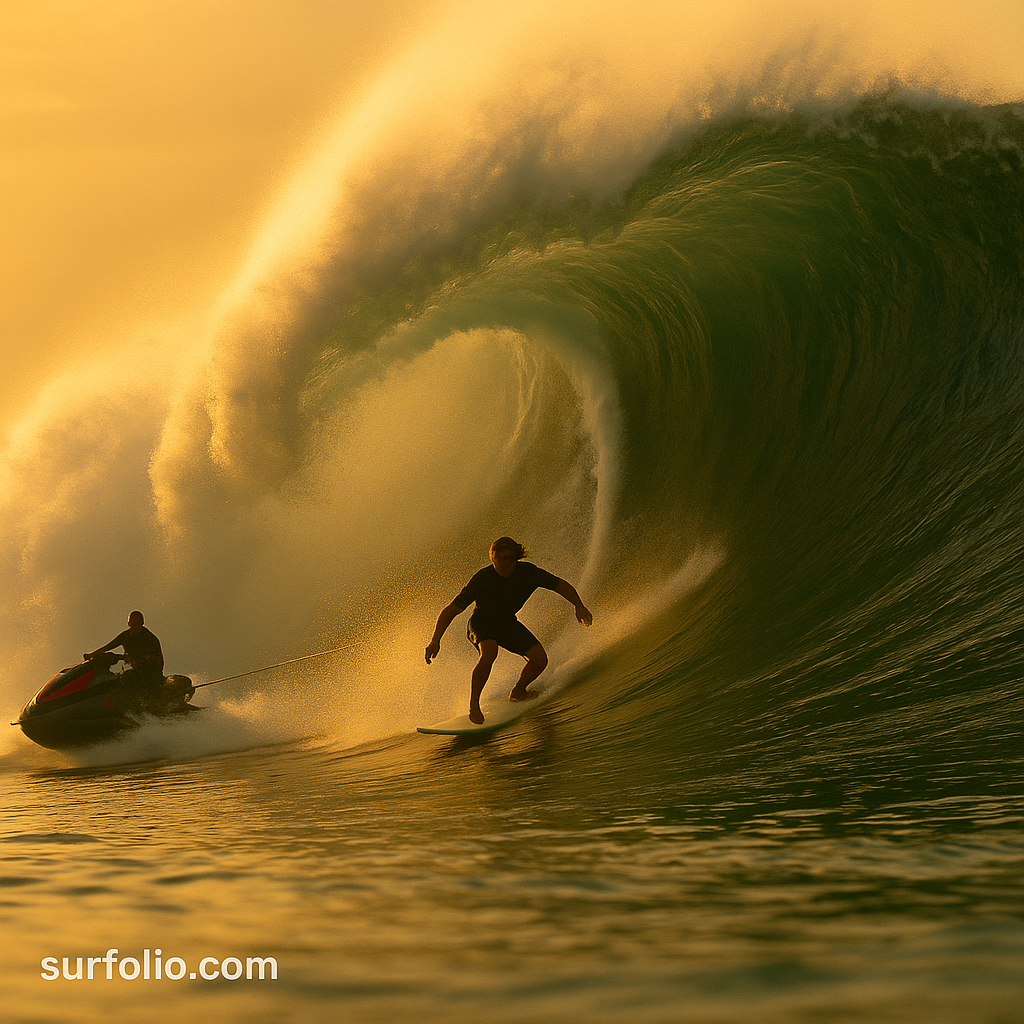
The Man Who Redefined Big Waves
Laird Hamilton isn’t just a surfer — he’s a force of nature. Known for his strength, fearlessness, and innovation, Laird changed the course of surfing history by unlocking waves once thought impossible to ride.
Before the 1990s, big-wave surfing had limits. Paddling alone couldn’t match the speed and power of giant swells like Jaws or Teahupo’o. Then came Laird — and the birth of tow-in surfing, a method that would change everything.
The Innovation That Changed Surfing Forever
In the early 1990s, Laird and a small crew of Maui surfers — including Buzzy Kerbox and Dave Kalama — began experimenting with a simple idea: use a personal watercraft (Jet Ski) to tow a surfer into waves too big to paddle.
It was part ingenuity, part necessity. Traditional paddling made it impossible to catch 40-foot faces before they broke. Tow-in surfing solved that by letting surfers match the wave’s speed — giving them access to new, terrifying frontiers.
By 1994, the tow-in revolution was fully underway. The world watched as Hamilton and his partners rode mountains of water at Peʻahi (Jaws), redefining what “big wave” really meant.
Jaws, Teahupo’o, and the Moment That Shocked the World
The defining moment came in August 2000 at Teahupo’o, Tahiti. Laird caught a massive, glassy barrel — one of the heaviest ever filmed. The image became legendary, symbolizing both danger and beauty.
That ride wasn’t just about athleticism — it was about trust in technology, training, and teamwork. Laird proved that with the right preparation and courage, surfers could push into realms once reserved for myth.
The Training Behind the Power
Laird’s approach to surfing has always been rooted in fitness, discipline, and respect for the ocean.
He trained with a mix of:
- Underwater weight circuits
- Breath-holding drills
- Cross-training in swimming, cycling, and stand-up paddling
He saw the surfer’s body as a tool — one that needed conditioning to survive the most extreme conditions nature could throw at it.
Today, his routines and philosophy influence athletes far beyond surfing.
Beyond Tow-In: Laird’s Lasting Legacy
Laird didn’t stop at tow-ins. His curiosity and creativity led to innovations like:
- Foil boarding: Riding above the water on hydrofoils
- Stand-up paddleboarding (SUP): Turning a Hawaiian tradition into a global movement
- Environmental advocacy: Promoting clean oceans and sustainable living
Through it all, he’s remained a symbol of progression — always exploring what’s next, never satisfied with limits.
Controversy and Respect
Tow-in surfing wasn’t without critics. Traditionalists argued that using machines took the purity out of surfing. But Laird’s results spoke for themselves. His commitment, athleticism, and pioneering spirit eventually earned respect, even from skeptics.
Today, most agree that tow-in surfing didn’t replace traditional surfing — it expanded it.
Final Thoughts
Laird Hamilton’s legacy is more than one big wave or one invention. It’s a mindset — a refusal to accept limits.
From Jaws to Teahupo’o, from Jet Skis to foil boards, he’s lived the mantra that defines surfing at its best: adapt, evolve, and respect the ocean.
Because every time someone paddles out to a new challenge, they’re following in the wake of what Laird started.
